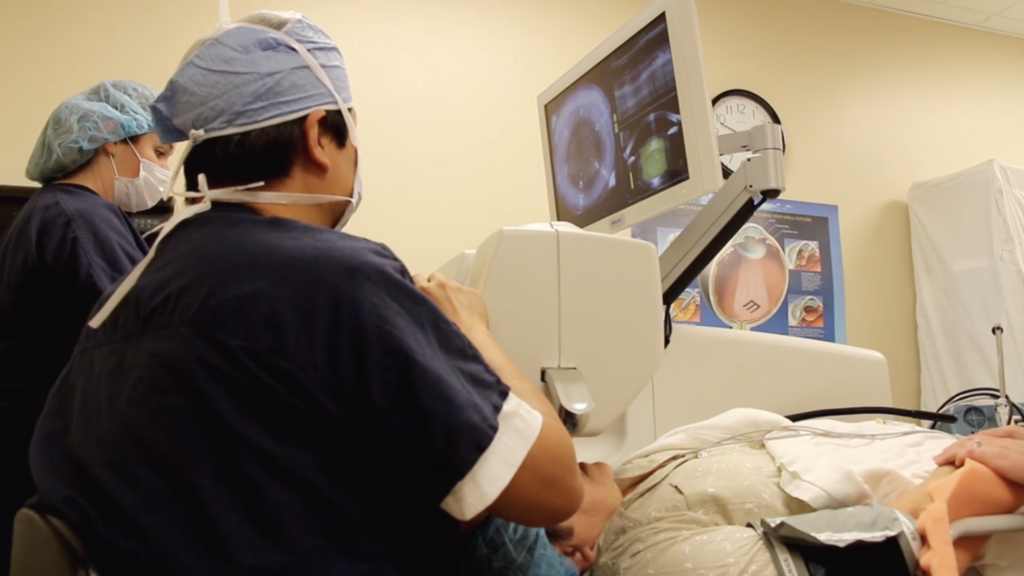Home » Blog » What to Expect During Cataracts Surgery
What to Expect During Cataracts Surgery
Posted by: Georgia Center for Sight

Cataract surgery may sound like an intimidating process, but it is actually quite simple. Why not improve your quality of life for the new year? Cataracts are a natural part of the aging process and affect more than 20.5 million Americans over the age of 40. They occur when the natural lens in your eye becomes cloudy, making it more difficult for light to enter your eye. It can impact your ability to do a variety of activities, such as knitting, playing cards, watching TV, reading, driving, and golfing. Cataracts can cause blurry vision, glare, and rings of light known as halos. Fortunately, cataract procedures are one of the most commonly performed surgeries, with more than 4 million procedures taking place each year.
So what is cataract surgery? During the procedure, the main goal is to break the cloudy cataract-affected lens into easily removable pieces. This process usually involves the removal of these pieces and inserting an artificial intraocular lens (IOL) in place of the natural lens. This typically happens by making tiny incisions in the eye using a surgical knife. Currently, you can choose between two options—manual surgery or bladeless procedures. The bladeless procedures are currently assisted by technologically advanced laser technology! For example, our LenSx® Laser offers image guidance for predictability and enhanced precision.
For a LenSx® Laser procedure, Dr. Dong can plan and perform a procedure that is completely customized for your eyes. For over a decade, femtosecond lasers have helped surgeons perform LASIK surgery with unparalleled precision and accuracy. The LenSx® Laser now brings additional advanced accuracy and reproducibility for cataract surgery.
Before the procedure, LenSx® captures high-resolution images of your eyes. These pictures help create precise measurements and data that assist the surgeon to perform a customizable procedure. During the process, the LenSx® Laser system’s advanced, three-dimensional imaging helps the surgeon precisely execute the steps of traditional cataract surgery. After the surgery, many patients experience vision improvements the next day following surgery and approach optimal vision between two to four months following their surgery.
After consulting with your surgeon to determine which cataract removal process is best for you, schedule an appointment today to improve your quality of life! Experience the joys of the new year with better vision.
